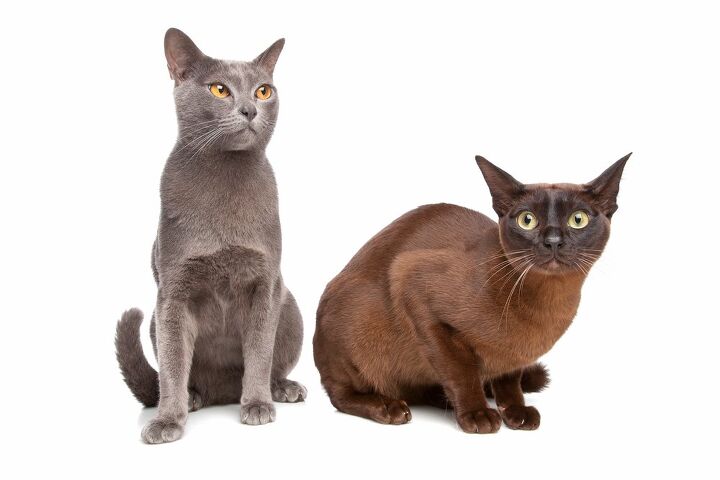European Burmese


About European Burmese
Both the European and North American Burmese owe their ancestry to the same cat, Wong Mau. In 1930, a sailor in New Orleans sold the female cat, originally from Burma, to Dr. Joseph Thompson of San Francisco. Small-bodied and walnut brown in coloration, Wong Mau was bred to Siamese cats and produced kittens of the same shade. It is likely that Wong Mau was also a Burmese-Siamese cross. Her kittens proved to breed true, and in the United States the Burmese received pedigree status in 1956, and CFA breed standard acceptance in 1959. Wong Mau’s descendants that traveled to Europe took a different developmental course when a red Siamese gene The European Burmese is a slightly more elegantly muscled cat, with a rounder appearance and more curving eyes.
The loving and affectionate European Burmese exhibits great loyalty to its humans, seeking out companionship, and wanting to be actively involved in every project — including lap time!
The loving and affectionate European Burmese exhibits great loyalty to its humans, seeking out companionship, and wanting to be actively involved in every project — including lap time! These cats do pick favorite members of the family, but they have more than enough love to spread around, and the generosity of heart to do so. Playful and inquisitive throughout their lives, the European Burmese does well with other cats and with dogs. They are also great climbers and jumpers. No bookshelf is too tall to scale, and few distances too great for a Burmese to attempt an acrobatic leap. Due to the breed’s trusting nature, these cats should live indoors only.
A medium-sized cat with an elegant line, the European Burmese has much rounder contours than its American counterpart, but it is still solidly built and strong-boned. Its body is long and slim with well-defined musculature in keeping with its excellence as a climber and jumper. The shape of the yellow or amber eyes is distinctive, with a top line that curves just slightly before slanting toward the short nose. The expression is one of knowing mystery that is both sweet and gently beguiling. The rounded ears are medium sized, and complete the pleasing shape and conformation of the head beautifully. They are not only outstanding pets in terms of personality, but also truly gorgeous cats.
The European Burmese exhibits ten color variations: chocolate, brown, lilac, blue, cream, red, brown-tortie, chocolate-tortie, lilac-tortie, and blue-tortie. Because they exhibit more of the traits of the Siamese than their American counterpart, the European cats often display color pointing.
The European Burmese has a silky short coat, and virtually no undercoat. Brushing occasionally will keep the fur in excellent condition. The goal is essentially to remove any dead, loose hairs, which can often be accomplished just by petting the animal or using a chamois cloth. The Burmese is so loving that they think grooming is quality time with their human and are thus highly compliant. Bathing is rarely if ever required.
Photo credit: Erik Lam/Shutterstock

Amy Tokic, Editor of PetGuide.com, is a passionate animal lover and proud pet parent of Oscar, a Shih Tzu/Chihuahua cross, and Zed, a Japanese Chin. Her love of animals began in kindergarten, when she brought her stuffed dog Snoopy into class with her every day. Now, she writes about her adventures in pet ownership and tirelessly researches products, news and health related issues she can share with other animal enthusiasts. In her free time, Amy loves perusing used book and record stores, obsessing over the latest pet products available and chasing squirrels with wild abandon (a habit attributed to spending too much time with her pooches).
More by Amy Tokic

























